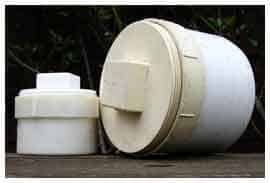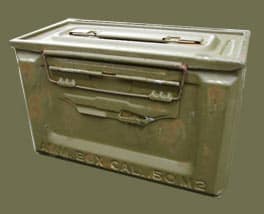So stop being so negative before you read this. There are some situations where you may choose to bury a time capsule underground. Time capsules underground (using a stainless steel or polyethylene container) can be considered when:
1. You are concerned about above ground exposure to weather elements.
2. The terrain (also the land manager or private owner) allows for digging.
3. Your time capsule is going to be buried on private land or public land as a cornerstone insert, or as an archived capsule for buildings or parks, or on another public land with permission from land managers.
4. You have little concern that the location will be disturbed over a long period.
Your best underground options are most likely on private property, special permission placements on public property, short term backyard, or “back 40” choices. (You see? There are alternatives here without expecting that you’ll see diggers in the local park.) At the moment, your best alternative for long term preservation underground is a non-rusting stainless steel housing or a polyethylene container that is well sealed and protected from environmental elements.
Stainless steel will survive for over 100 years. Polyethylene will also outlast your own age expectations. Stainless containers meant for time capsules have screw-on tops that are sealed with silicone. The stainless steel time capsule (with archivist kits) is in the $50 range. Don’t ever try and scrimp on preservation materials if your capsule is meant to last for decades, above or below ground.
If sealed well, structural polyethylene, polypropylene, and polyurethane (not PVC) are excellent long term time capsule housing materials without the negative consequences of PVC. These polymers last at least 50 years in wide extremes of temperature. But this material cannot be easily found at your local home improvement centers. If you can construct your own air-tight capsule from materials that you can obtain, this is a great material to use.
So, your best…and commercially available…underground option remains the stainless steel tube as discussed above.
For a broader discussion of private land, underground placement of time capsules, see our Time Capsules on the Private Lands page.
For those remote private or public drop sites that allow underground placement of a camouflaged time capsule, careful procedures will ensure the rediscovery of your capsule in future decades.
To help guarantee planned rediscovery in the wilds, you should take two short lengths of reinforcing bar (or small pipe). You can place horizontally in the ground below the surface and directly above the buried capsule. Inexpensive short lengths of rebar are available at most building supply stores. While out of view, these metal rods in future years will alert your retrievers to the exact location of your capsule…as long as a metal detector is used. Even though your GPS coordinates together with photos and other clues will make identification of the drop site easy, your Retrieval Folder should advise using a metal detector in the retrieval process so the exact underground site will be pinpointed without any question.
 The Plastic PVC Pipe Time Capsule
The Plastic PVC Pipe Time CapsuleA four to six-inch diameter PVC pipe with end caps sealed by silicone is a low-cost choice for short periods of storage underground…but with strong reservations.
Inexpensive PVC, or polyvinyl chloride pipe, is the common plastic drain pipe you can buy at your local home center or hardware. The problem with this lightweight material is that it emits chemical vapors, which break down organic materials within a restrictive atmosphere. The small, enclosed space of your time capsule will accelerate this bio-degradation. Plastic PVC pipe can also crack if not buried deep enough to prevent freezing. So PVC housing material is not recommended.
A Teeny “But”: You still might consider PVC pipe with the following caveats:
If your time capsule is underground for a relatively short time, organic deterioration may be negligible. If the PVC pipe contains no perishable items like paper, softwood, fabric, photos, or more fragile organic articles, then you may see little deterioration or damage.
So if you are planning for a future generation’s time capsule retrieval that is many months or years away, you should always avoid the PVC pipe option. And if you can’t be certain when your time capsule will be retrieved, it will be best to look at other, safer underground capsule housing choices without question.

Er…no. As above or below ground or time capsules, U.S. military issue ammunition cans are neither sensible nor acceptable. For short term scavenger hunts or use in the sport of geocaching, these boxes may suffice above ground. But they’re out of place in any wilderness area, so they invite discovery. Since our retrieval time frames are usually longer than typical scavenger hunts, we recommend more secure and better options. Other commonly used containers for the sport of geocaching, like 5-gallon plastic buckets and Tupperware containers, are also unsuitable long-term housings for time capsules.
An ammo can should never be placed underground. Over time, the steel container will rust, and its rubber seal virtually assures the invasion of water and humidity. As a below-ground container, ammo cans carry too much ecological risk, so they should be rejected in favor of much better and more secure alternatives.
Next Page: Preparing Your Retrieval Folder